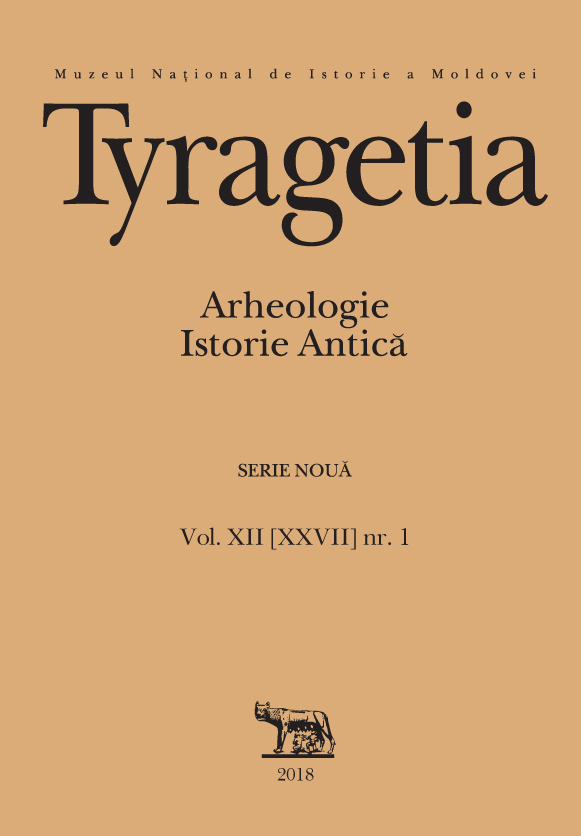Бронзовая матрица с Бельского городища: к вопросу о центральноазиатских мотивах в раннескифском зверином стиле Северного Причерноморья
Bronze matrix from Bilsk forthill: about Central Asian motifs in early Scythian animal style of Northern Black Sea Cost
Author(s): Roman Zimovets, Serghey Skory, Vitaliy N. OkatenkoSubject(s): Archaeology
Published by: Muzeul Naţional de Istorie a Moldovei
Keywords: Scythians; Scythian animal style; matrix; punch; Bilsk forthill; early Scythian epoch;
Summary/Abstract: The article introduces into scientific circulation a unique matrix for the production of golden or silver plaques in the Scythian animal style, which was discovered at the Bilsk forthill. On the working surface of the matrix there is depicted a horse with bent legs and a bowed head. Analogical working tools from Dnieper, North Caucasus and Balkan regions are analyzed. There is only one analogy to the image on the matrix among products originated from Eastern Europe: golden plates of the horse’s bridle from Kelermes kurgan № 4. On this basis the matrix is dated the 7th century B.C. Further plot, iconographic and stylistic analogies allow us to conclude that the horse images from the Bilsk matrix and Kelermes plates is matched with the Central Asian images of horses, in particular those placed on deer stones of Mongolia, Tuva and Altay. It’s argued that the matrix could have reached Bilsk settlement together with one of the waves of Scythian migrants from Central Asia, or could be produced by a local master familiar with the Central Asia tradition of depicting a horse. Considerations about semantics of the image of a horse in the Scythian funeral ceremony are represented.
Journal: Tyragetia (Serie Nouă)
- Issue Year: XII/2018
- Issue No: 1
- Page Range: 219-236
- Page Count: 18
- Language: Russian

